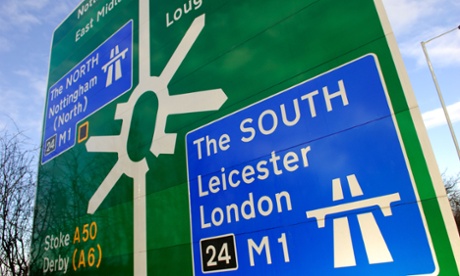
The gap between cities and towns in the south and the rest of the UK has widened over the past 10 years, according to a Centre for Cities analysis of Britain’s 64 largest cities and towns which draws on a decade of official data, despite stated efforts by the last two governments to bridge the north-south divide and rebalance the economy.
The Cities Outlook report finds cities in the south are out-performing those in the rest of the country in terms of population growth and in the number of jobs and businesses created.
Between 2004 and 2013 the cities and towns of the south (those in the south-west, London, south-east and east regions, as defined by the Centre for Cities – see map below) saw their populations grow by 11.3%, more than double the rate of cities elsewhere (5.5%). Only two cities outside the south (Northampton and Cardiff) feature in the top 10.
Sunderland was the only UK city to see its population shrink.
The fastest growing divide was in the number of net new jobs created over the 10 years: for every 12 new jobs in the south, only one was created in the rest of Britain.
Despite this north-south trend, the picture was more mixed for individual cities: four cities outside the south (Coventry, Newcastle, Aberdeen and Nottingham) made the top 10, while Gloucester and Swindon ranked in the bottom 10.
Cities in the south also saw a much larger increase in the number of new businesses – although the top 10 cities again shows a more even geographical split, with Aberdeen and Warrington among the best performers.
Grimsby and Blackpool had fewer businesses in 2013 than in 2004.
These diverging economic performances fed through into demand for housing, with cities and towns in the south becoming even less affordable over the decade , and exacerbating what was already a significant problem in 2004, the report said.
In London, the average house was priced at nine times average earnings in 2004; by 2014 that had risen to 15 times average earnings.
Overall there was very little change in the affordability of houses outside the south.
The report also compared the performance of the 64 cities and towns using a wider range of data released in 2014 – from average earnings to qualifications to broadband speeds. You can see how they ranked by selecting a topic from the drop-down bar below.
The map below shows how the Centre for Cities defined cities in the south: as cities and towns in the south-west, London, south-east and east regions.

